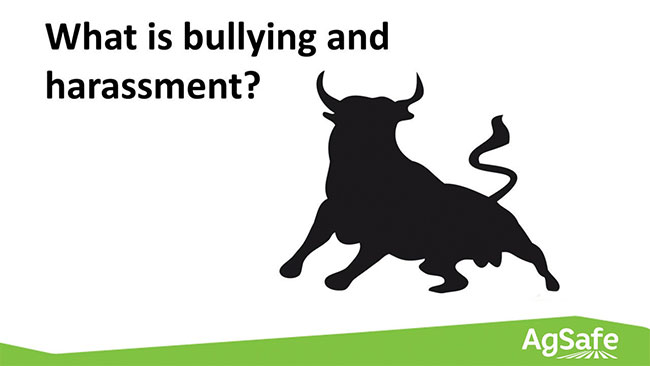
Features
Management
Bullying and harassment? You need a policy for that.
February 4, 2020 By TJ Garcha

Bullying and harassment are behaviours intended to humiliate or intimidate an individual. These issues occur in many workplaces, including some greenhouse operations, and they pose a potentially serious risk to the mental and physical health, well-being and safety of workers.
As of 2013, Canada’s Workers Compensation Act requires employers to have a bullying and harassment policy in place or a respectful workplace policy as part of their health and safety program.
Because bullying and harassment can come from co-workers, supervisors, employers, or other sources that aren’t always onsite, the respectful workplace policy applies to everyone.
Behaviours that indicate bullying or harassment in the workplace include targeted verbal aggression, personal attacks, spreading of malicious rumours, alienation and sabotaging others’ work. Incidents can arise as a result of personality conflicts, personal or workplace stress, or preconceived perceptions about cultural or language differences.
If unchecked, the situation can have serious consequences for the target as well as co-workers, family and friends. In the workplace, bullying and harassment might lead to health and safety issues, such as distraction during dangerous tasks, physical and/or psychological injury, lower productivity and morale, more absences and greater staff turnover.
It’s important to note the difference between family- and non-family-owned operations. In family-run operations, familial dynamics and conflicts must be kept separate from workplace dynamics, especially if non-family workers are involved.
Mitigating bullying and harassment starts with workplace policy, but employers can also role model and foster positive, respectful behaviours. Learn how to recognize the signs of bullying and harassment within your operation. Educate your workers and supervisors about its dangers, and train your staff on how to address the issues respectfully. Implement an open-door communication policy. Listen to concerns and investigate incidents or complaints when they arise.
Co-workers can also mitigate bullying and harassment by not engaging in gossip, speaking up against bullying, and being supportive by listening and reporting incidents.
The benefits of having a respectful workplace policy are many, as it:
- Shows that you value your employees as individuals
- Easily identifies the difference between one incident or a pattern of behaviour
- Allows issues and complaints to be addressed in a neutral non-personal manner
- Helps retain good employees who are loyal and productive, helping them feel respected and well-treated
- In contrast, not having a policy in place can lead to:
- A dysfunctional workplace environment
- Financial and legal implications, such as loss of productivity, fines, or legal action
- Poor workplace morale, employee time loss or high worker turnover
- Costly follow-ups and investigations
- A negative impact to the company’s reputation
To start building bullying and harassment policies and procedures for your operation, visit http://agsafebc.ca/bullying-and-harassment/, which houses resources such as sample reporting and investigative procedures, templates for worker complaint forms and more.
AgSafe BC’s “What is Bullying & Harassment” video, available at http://agsafebc.ca/tools/videos in English and Spanish, further explains behaviours indicating bullying or harassment and how to address them. The video also explains what actions are not considered bullying or harassment but are reasonable workplace management protocols.
TJ Garcha is the senior safety advisor at AgSafeBC, the health and safety association for agricultural employers in British Columbia.
Print this page